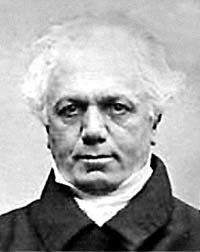Name William Bland Role Medical practitioner | Parents Robert Bland | |
 | ||
Died July 21, 1868, Sydney, Australia | ||
Xiaobo pu and linzi pan 2nd sonata for guitar and piano by william bland
William Bland (5 November 1789 – 21 July 1868) was a transported convict, medical practitioner and surgeon, politician, farmer and inventor in colonial New South Wales, Australia.
Contents
- Xiaobo pu and linzi pan 2nd sonata for guitar and piano by william bland
- Early life
- Australia
- Legacy
- References
Early life
Bland was born in London, the second son of an obstetrician, Dr. Robert Bland.
In January 1809, Bland became a surgeon 5th grade aboard HM sloop Hesper where at Bombay, India he was involved in a wardroom argument with Robert Case, the purser. In the duel, which took place on 7 April 1813, Bland killed Case.
Australia
Bland was convicted of manslaughter and transported to Van Diemen's Land (Tasmania) with a sentence of 7 years transportation, reaching Hobart Town of Tasmania aboard Denmark Hill in January 1814 and Sydney aboard Frederick on 14 July 1814 where he served at Castle Hill gaol for a short period of time. He was pardoned on 27 January 1815.
In 1818 he wrote "pipes" (anonymous and variously insulting satires) criticising Governor Macquarie's treatment of farmers, and making fun of his desire to have his name on foundation stones; the Governor was not amused. Bland's handwriting was recognised and on Thursday 24 and Friday 25 September 1818 he was in court and convicted of libel fined £50/-/-d and sentenced to 12 months imprisonment which he served at Parramatta, New South Wales.
In 1830 he actively opposed attempts to alienate large areas of crown land, and in 1831 joined the committee of the Australian Landowners Association to fight the Ripon land regulations.
In 1825 his committee founded Sydney Public Free Grammar School. The foundation stone of a new building was laid by the chief justice in 1830 and the Sydney College opened on 19 January 1835. Bland was treasurer from 1835 to 1844 and in 1845 became president, an office he held when the buildings were sold to the University of Sydney in 1853.
In September 1834 Sir Edward Lytton Bulwer, M.P., wrote from England that the Australian situation was not well understood in London. He suggested that an organised association should be formed, and that it should appoint a parliamentary agent for New South Wales. As a result, the Australian Patriotic Association was formed in 1835 by William Wentworth; Bland was its "chairman of the committee of correspondence" (i.e.: Secretary).
In 1839 he contributed funds and land to the building of St John's Ashfield.
During 1839–1841, Bland wrote letters for Australian Patriotic Association (emancipists), which now show the constitutional struggles towards autonomy. Bland, as secretary ("chairman of the committee of correspondence") to the Australian Patriotic Association, helped draft two bills for a "representative constitution", which was approved in 1842 with Bland representing Sydney at its reading and approval passages.
Bland was an elected member of the NSW Legislative Council twice (1843–1848, 1849–1850) for the City of Sydney and after the introduction of responsible government was appointed to the NSW Legislative Council (1858–1861).
In approximately 1845, he was the subject of the oldest surviving photograph taken in Australia, held by the Mitchell Library, State Library of New South Wales.
In February 1846, Bland, then a widower, married a widow, Eliza Smeathman.
In 1849 Wentworth introduced a bill into the Legislature to create the University of Sydney, naming Bland as one of its first senators, but Robert Lowe raised Bland's criminal record and the 1813 duel, and the bill failed. Bland challenged Lowe to a duel but Lowe avoided it. When the bill was re-introduced Bland's name had been omitted, and the bill was passed, but without the list of nominees, and the proclamation appointing the Senate on 24 December 1850 did not include Bland.
A banquet was held in July 1856 to celebrate the grant of a new Constitution by the British government. Bland accepted an invitation to preside and received a deserved ovation. On 5 November 1858 he was given a sum of money and a candelabrum for his services to the community. He resigned on 21 March 1861 and an ensuing attempt to procure an annuity for him was defeated in the Legislative Council. In 1861 he was declared a bankrupt.
Bland continued in active medical practice until 1868. In 1863-4 he conducted correspondence with Father Therry on the best way to construct a transatlantic telegraph cable.
He died intestate in Sydney on 21 July 1868 of pneumonia, and was accorded a State Funeral.
Legacy
Bland County, New South Wales was named in his honour.
An electoral division in the first federal parliament, the Division of Bland, was named after him. This division was abolished in 1906.
Bland is also commemorated in the name of Bland Shire Council and Bland Street in suburban Ashfield and Haberfield where he purchased land in 1839. The Bland Oak in Oakdene Park, Carramar, New South Wales and Bland Street in Carramar, New South Wales, are located what was known as the Mark Lodge estate, acquired by Bland in 1840.
In honour of Dr William Bland's contribution to medical practice within early Australia, a twelve level building opposite Sydney Hospital at 229–231 Macquarie Street in Sydney was built in 1960 and named the William Bland Centre. It predominantly houses private medical practices such as Physiotherapy Clinic mySydneyPhysio, addressing the health needs of Sydney's CBD workforce.
A public housing building, Blandville Court, on Victoria Road at Gladesville is named after the early name of the nearby suburb of Henley, which was originally called Blandville after Bland.
